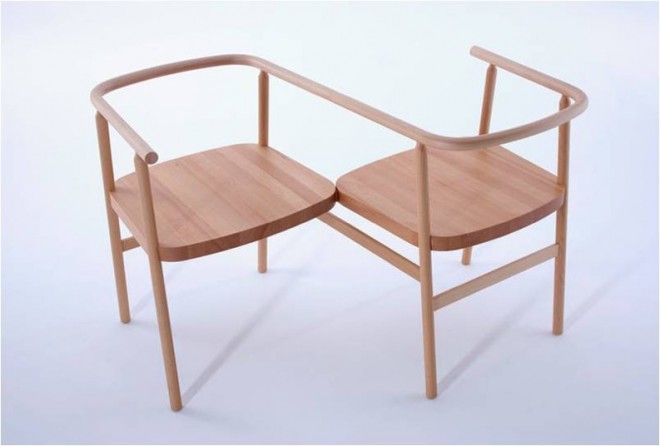
American trends expert Daniel Levine identified 11 “social trends” that would dominate consumer preferences and lifestyles in the coming years.
Such trends inspired by “green and natural,” “technology,” “health,” “meaningful connections,” “personalization,” “uniqueness” and “socially responsible,” have been around for years, but have evolved through the seasons in response to changing tastes, new materials and discoveries.
Green and natural is no longer just about sourcing for and recycling green materials. It’s also about pieces that assume the shape of organic objects.
“Pillows, for instance, are shaped like giant river stones,” Levine said. “They come in different sizes and shapes. Since we want green and natural in our lives and homes, we remove the barrier between the outside and the inside.”
Levine, director of the New York-based Avant-Guide Institute, was in Manila for a series of talks and interviews in the run-up to the Philippine International Furniture Show (March 11-13 at SMX Convention Center).
With local interior and furniture designers, Levine shared his ideas—based on social trends defined over a period by almost 9,000 researchers in Europe and the United States.
These trends are applicable not only to fashion and home furnishing, but also to other products and services, including credit cards, software, hotels, airlines and restaurants.
He stressed the difference between fads—which could last from several months to a year—and trends that could prevail indefinitely.
“Trends are what people are thinking and feeling during a particular period, and they’re looking for these trends to be present in every aspect of their lives—from the clothes they wear and the cars they drive, to the way they furnish their homes,” said Levine.
Fads, like hairstyles and fashions accessories, come and go. In homes, fads are usually seen in accessories and “in” colors.
“When you buy a big piece like, say, a sofa, and you’re spending so much money, you can’t just buy a fad sofa,” he noted.
Colors
He acknowledged the importance of colors in interior design. The colors to watch out for in 2016 are gray, white, off-white, beige, yellow, walnut, copper and brown.
From textiles to accessories, metallics are big on the design scene, Levine said. It’s not all about “Studio 54-shimmer”; metallics extend from “disco-ball glitz to more subdued shades.”
As more people attempt to bring the outdoors in, expect more outdoor-inspired motifs such as jungles, flowers, mountains and rivers to occupy indoor spaces.
“Because of these trends, colors like deep blues, greens, browns and various earth tones will also be big in 2016,” Levine said.
The Nordic influence—characterized by light, spare and simple, well-designed furnishings—is still in. The key to making this “down-to-earth” theme less cold and antiseptic is to use warm textures such as wood, paper, fur, shearling, hides and cork.
The raw, industrial aesthetic is still very much around, with such materials as concrete, clay, copper, glass and steel. There’s room for variance in the form of marbling and the execution of irregular, uneven and distressed surfaces.
Trend spotters are also seeing a lot of three-dimensional materials. Throw pillows, for instance, don’t just have different colors or patterns on each side.
“We’re now seeing throw pillows with different textures on each side,” said Levine. “There are even throw pillows with reversible cases that offer two entirely different textures. Such a trend answers people’s need for tactile objects.”
Since people, especially in the West, have grown tired of cheap, mass-produced objects, a growing number are now in search of something more unique.
“The trend for uniqueness is connected with the idea that people now want things nobody else has,” said Levine.
In rich economies where almost everyone can afford pricey furniture pieces, it’s considered the height of “cool” to use or display something not readily found in mainstream stores.
This trend is evident in home and fashion. There’s a growing backlash in the West against soul-less, factory-produced items from, say, China.
Togetherness
Because of their innate creativity and ingenuity and the availability of natural materials, Filipino designers and manufacturers are bound to thrive, thanks to this trend, said Levine.
As a reaction to surfeit of technology, people are in search of more intimate connections with other people. This need has resulted in a trend Levine calls “meaningful connections or togetherness.”
There’s much more to life than virtual reality and connecting with friends and loved ones through social media. This explains the demand for furniture pieces that accommodate two people. And it’s not limited to a king-size double bed or the classic loveseat.
“Think of a swing, hammock or rocking chair big enough for two people,” said Levine. “These are things we normally would associate with one person.”
Finally, life-changing technology has also become big driver of trends. Apart from smartphones and tablets, Levine sees the recent introduction of virtual reality headsets as game changer in the way we approach and reimagine spaces.
Primarily designed for gaming, the headset can also be used to turn, say, an empty room into a virtually furnished one. It can further revolutionize design and boost demand by allowing clients to virtually see finished setups.
“Furniture is also incorporating technology in many different ways,” said Levine. “The most simple way is to create furniture pieces with outlets that can power your gadgets.”